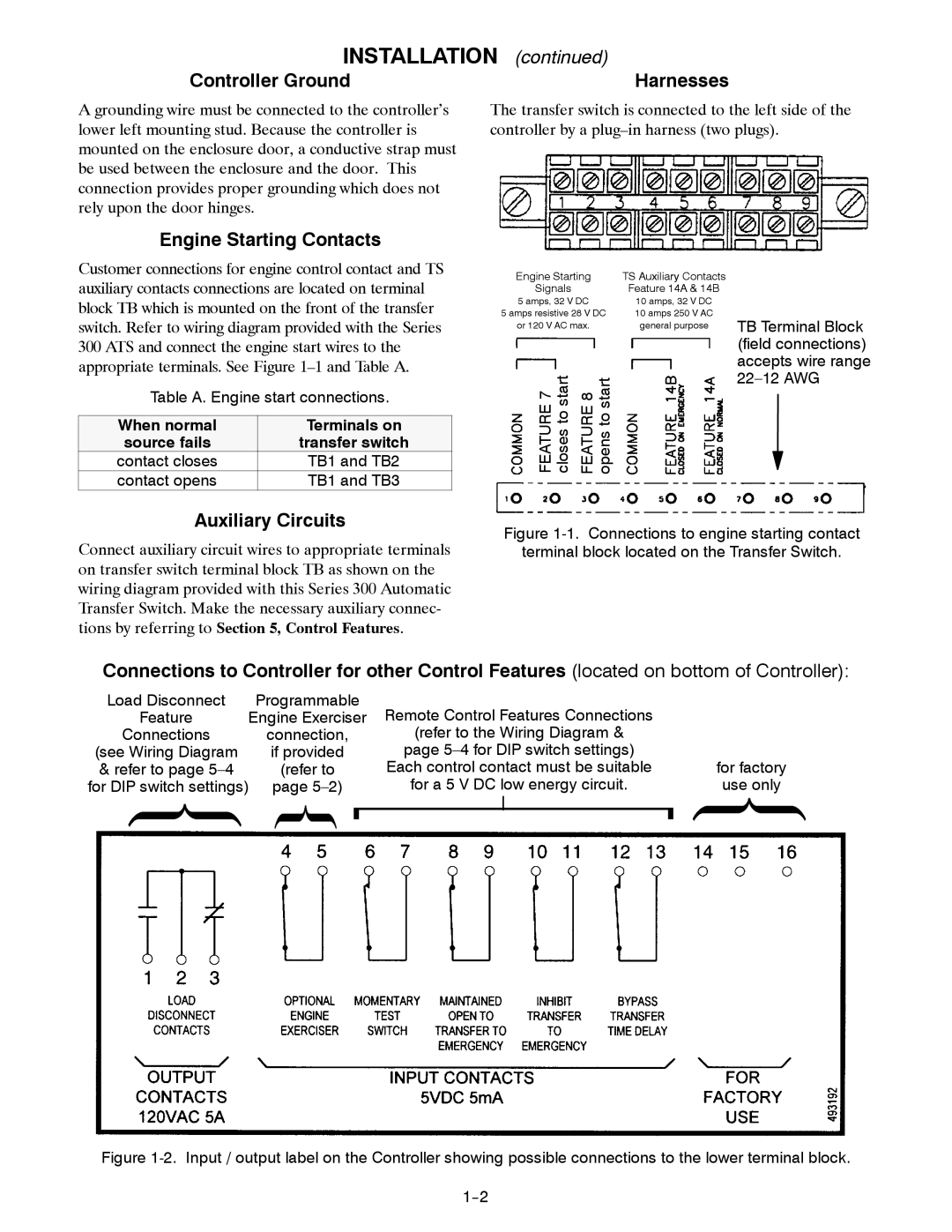
INSTALLATION | (continued) |
Controller Ground | Harnesses |
A grounding wire must be connected to the controller’s lower left mounting stud. Because the controller is mounted on the enclosure door, a conductive strap must be used between the enclosure and the door. This connection provides proper grounding which does not rely upon the door hinges.
Engine Starting Contacts
Customer connections for engine control contact and TS auxiliary contacts connections are located on terminal block TB which is mounted on the front of the transfer switch. Refer to wiring diagram provided with the Series 300 ATS and connect the engine start wires to the appropriate terminals. See Figure
Table A. Engine start connections.
When normal | Terminals on |
source fails | transfer switch |
contact closes | TB1 and TB2 |
contact opens | TB1 and TB3 |
Auxiliary Circuits
Connect auxiliary circuit wires to appropriate terminals on transfer switch terminal block TB as shown on the wiring diagram provided with this Series 300 Automatic Transfer Switch. Make the necessary auxiliary connec- tions by referring to Section 5, Control Features.
The transfer switch is connected to the left side of the controller by a
Engine Starting | TS Auxiliary Contacts |
|
Signals | Feature 14A & 14B |
|
5 amps, 32 V DC | 10 amps, 32 V DC |
|
5 amps resistive 28 V DC | 10 amps 250 V AC | TB Terminal Block |
or 120 V AC max. | general purpose | |
|
| (field connections) |
|
| accepts wire range |
FEATURE 7 closes to start FEATURE 8 opens to start |
| |
|
|
Figure 1-1. Connections to engine starting contact
terminal block located on the Transfer Switch.
Connections to Controller for other Control Features (located on bottom of Controller):
Load Disconnect | Programmable |
Feature | Engine Exerciser |
Connections | connection, |
(see Wiring Diagram | if provided |
& refer to page | (refer to |
for DIP switch settings) page
Remote Control Features Connections |
|
(refer to the Wiring Diagram & |
|
page |
|
Each control contact must be suitable | for factory |
for a 5 V DC low energy circuit. | use only |
